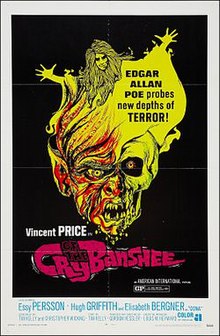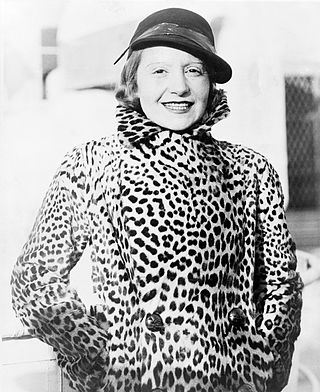
Elisabeth Bergner was an Austrian-British actress. Primarily a stage actress, her career flourished in Berlin and Paris before she moved to London to work in films. Her signature role was Gemma Jones in Escape Me Never, a play written for her by Margaret Kennedy. She played Gemma, first in London and then in the Broadway debut, and in a film version for which she was nominated for the Academy Award for Best Actress. In 1943, Bergner returned to Broadway in the play The Two Mrs. Carrolls, for which she won the Distinguished Performance Medal from the Drama League.
American International Pictures LLC is an American film production company owned by Amazon MGM Studios. In its original operating period, AIP was an independent film production and distribution company known for producing and releasing films from 1955 until 1980, a year after its acquisition by Filmways in 1979.
Dr Terrible's House of Horrible is a satirical British comedy horror anthology series created by Graham Duff, who co-wrote the series with Steve Coogan. BBC Two broadcast the series in 2001. The title parodies Amicus Productions' anthology film Dr Terror's House of Horrors (1965). Coogan presents each episode as Dr. Terrible, and plays various roles throughout.

Witchfinder General is a 1968 British period folk horror film directed by Michael Reeves and starring Vincent Price, Ian Ogilvy, Hilary Dwyer, Robert Russell and Rupert Davies. The screenplay, by Reeves and Tom Baker, was based on Ronald Bassett's 1966 novel Witchfinder General. The film is a heavily fictionalised account of the murderous witch-hunting exploits of Matthew Hopkins (Price), a lawyer who falsely claimed to have been appointed as a "Witch Finder Generall" [sic] by Parliament during the English Civil War to root out sorcery and witchcraft. The plot follows Roundhead soldier Richard Marshall (Ogilvy), who relentlessly pursues Hopkins and his assistant John Stearne (Russell) after they prey on his fiancée Sara (Dwyer) and execute her priestly uncle John Lowes (Davies).
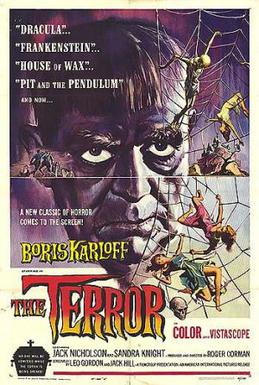
The Terror is a 1963 American independent horror film produced and directed by Roger Corman. The film stars Boris Karloff and Jack Nicholson, the latter of whom portrays a French officer who is seduced by a woman who is also a shapeshifting devil.

Count Yorga, Vampire is a 1970 American vampire horror film written and directed by Bob Kelljan and starring Robert Quarry, Roger Perry and Michael Murphy. It was followed by a sequel, The Return of Count Yorga.
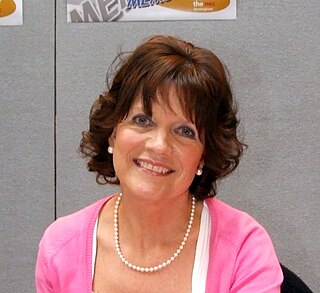
Sarah Louise Clouston Geeson, known professionally as Sally Geeson, is an English actress with a career mostly on television in the 1970s. She is best known for playing Sid James's daughter, Sally, in Bless This House and for her roles in Carry On Abroad (1972) and Carry On Girls (1973). She also starred alongside Norman Wisdom in the film What's Good for the Goose (1969), and appeared with Vincent Price in two horror films, The Oblong Box (1969) and Cry of the Banshee (1970).

The Oblong Box is a 1969 British gothic horror film directed by Gordon Hessler, starring Vincent Price, Christopher Lee and Alister Williamson. This was the first film to star both Price and Lee.

Michael Alan Gothard was an English actor, who portrayed Kai in the television series Arthur of the Britons and the mysterious villain Emile Leopold Locque in the 1981 James Bond film For Your Eyes Only.

House of Usher is a 1960 American gothic horror film directed by Roger Corman and written by Richard Matheson from the 1839 short story "The Fall of the House of Usher" by Edgar Allan Poe. The film was the first of eight Corman/Poe feature films and stars Vincent Price, Myrna Fahey, Mark Damon and Harry Ellerbe.
Louis M. "Deke" Heyward was an American producer and film and television screenwriter.
Gordon Hessler was a German-born British film and television director, screenwriter, and producer.

Robert Walter Quarry was an American actor, known for several prominent horror film roles.
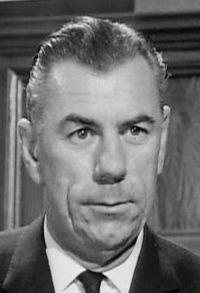
Alister Williamson was an Australian-born character actor, who appeared in many British films and television series of the 1960s and 1970s. A big, craggy-faced man, he would usually be found playing gruff police inspectors or henchmen in adventure series and police dramas of the period. He was also notable as a supporting player in a number of classic British horror films.
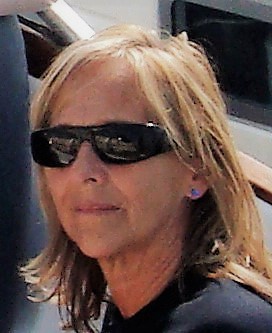
Hilary Dwyer, also known as Hilary Heath, was an English actress, businessperson, and film producer. She was best known for her acting roles in films such as Witchfinder General (1968) and Wuthering Heights (1970). She also performed on the London stage. In 1974, she married the talent agent Duncan Heath, with whom she had two children, and helped to found Duncan Heath Associates, which was later bought by ICM Partners. They divorced in 1989. Later in her career, under her married name, "Hilary Heath", she produced the feature film An Awfully Big Adventure (1995), as well as TV remakes of Daphne du Maurier's Rebecca (1997) and Tennessee Williams's The Roman Spring of Mrs. Stone (2003). Her final producing role was the 2014 miniseries Jamaica Inn.

Murders in the Rue Morgue is a 1971 American horror film directed by Gordon Hessler, and starring Jason Robards, Christine Kaufmann, Herbert Lom and Lilli Palmer. The screenplay by Christopher Wicking and Henry Slesar is a loose adaptation of Edgar Allan Poe's 1841 short story of the same name. However, it departs from Poe's version in several significant aspects, at times more resembling Gaston Leroux's The Phantom of the Opera. In a DVD interview, Hessler said that he felt it necessary to reinvent the plot as he believed the majority of audiences were too familiar with Poe's story.

Scream and Scream Again is a 1970 British horror film starring Vincent Price, Christopher Lee, Alfred Marks, Michael Gothard, and Peter Cushing. It is based on the novel The Disorientated Man (1967) attributed to 'Peter Saxon', a house pseudonym used by various authors in the 1960s and 1970s.

Christopher Wicking, also known as Chris Wicking, was a British screenwriter, often in the horror and fantasy genres, notably for the British arm of American International Pictures and with Hammer Film Productions, for whom he was the last 'resident script editor'.
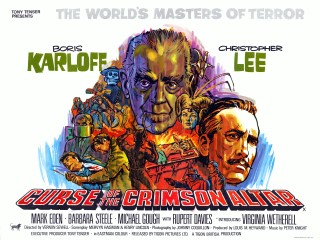
Curse of the Crimson Altar is a 1968 British horror film directed by Vernon Sewell and starring Christopher Lee, Boris Karloff, Barbara Steele and Mark Eden. The film was produced by Louis M. Heyward for Tigon British Film Productions. The screenplay, by Doctor Who writers Mervyn Haisman and Henry Lincoln, was based (uncredited) on the short story "The Dreams in the Witch House" by H. P. Lovecraft. This film also featured the final British film appearance of Karloff.
Louis Selwyn is an English actor and film producer. He portrayed Martin Downes, the only child of Bet Lynch who, it is implied, is connected to current Coronation Street storylines concerning Laura Neelan. He is known for his early roles in the BBC's The Three Musketeers and on stage at The Royal Shakespeare Company, as well as later appearances in the series The Strauss Family as Josef Strauss, and later as Jofre Borgia in The Borgias, both for the BBC. He went on to play Mick Jagger in Let the Good Stones Roll with Sara Coward at the Ambassadors Theatre in the West End and on to roles at The Royal National Theatre's Olivier Theatre. He released a record, Bind Your Love in Heaven, in 2001 on his own label Quantum Records. Louis has since been credited as a Producer on four feature-length films including Evil Never Dies in which he also starred as 'Gordon'. He stars in an upcoming Hitchcockian thriller/comedy horror Heckle, due for release in 2021.
